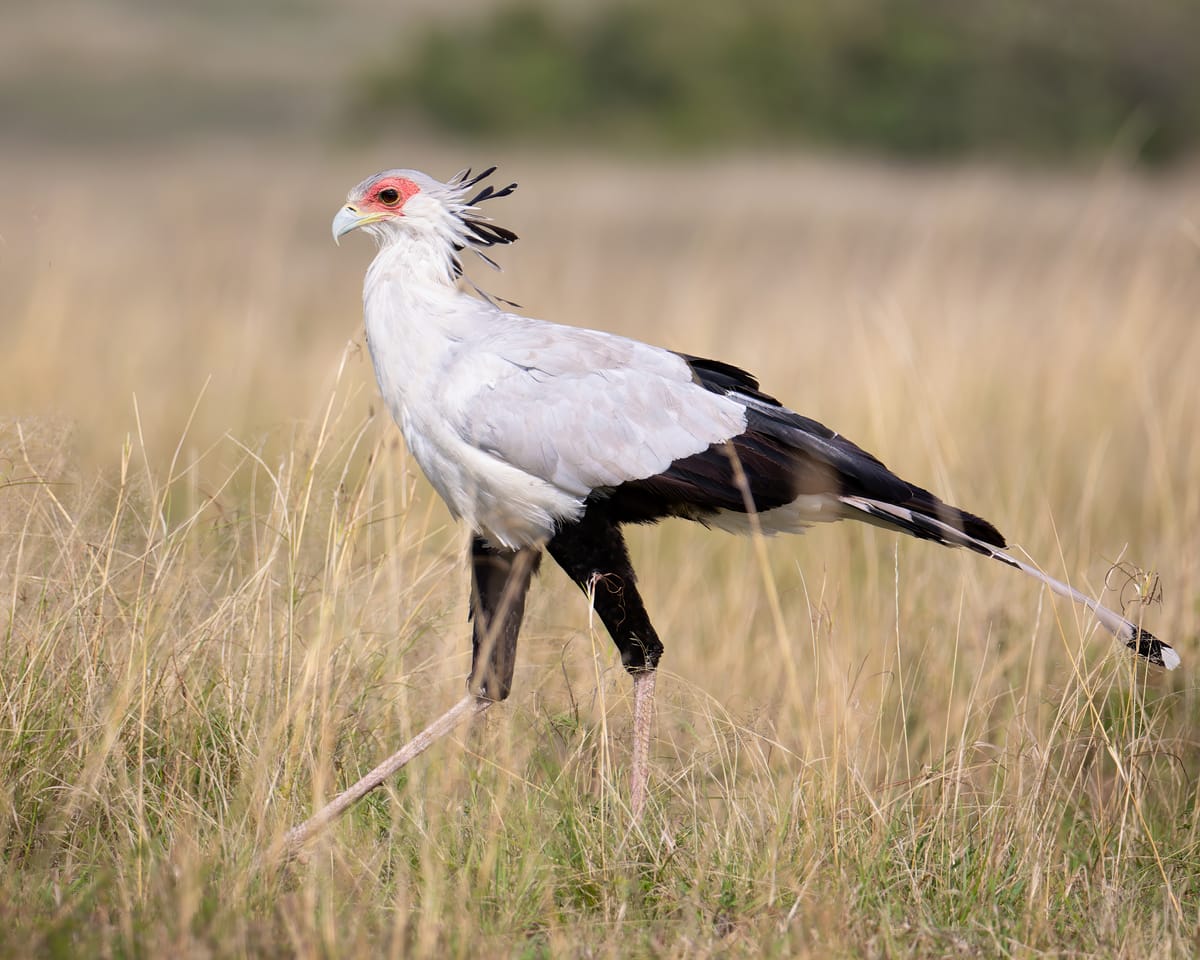Bird Spotlight: the Secretarybird

In the vast plains of sub-Saharan Africa roams a bird like no other—the Secretarybird (Sagittarius serpentarius). With its striking appearance and unique hunting style, this fascinating bird of prey has captured the imagination of bird enthusiasts and researchers alike. Let's delve into what makes the Secretarybird so extraordinary.
A Distinctive Look
The Secretarybird is a tall, elegant bird, standing up to 4 feet (1.2 meters) in height. Its long legs and distinctive plumage set it apart from other birds of prey. It boasts a grey body, black flight feathers, and a tail with long central plumes that give it a regal appearance. The bird's head is adorned with a crown of black feathers that resemble quill pens tucked behind the ears, which is believed to be the origin of its name, likening it to old-timey office secretaries.
Unusual Hunting Technique
Unlike most birds of prey, which hunt from the air, the Secretarybird hunts on foot. It stalks across the savannas, using its long legs to cover ground quickly. This terrestrial predator primarily preys on small mammals, insects, and reptiles, including venomous snakes. The Secretarybird’s long legs are a crucial adaptation for its unique hunting method. It uses powerful kicks to stun or kill its prey, especially snakes, before consuming them. This method has earned the bird a reputation as a formidable serpent slayer.
Habitat and Range
Secretarybirds are found across the open grasslands and savannas of sub-Saharan Africa, from Senegal in the west to Somalia and Ethiopia in the east, and as far south as South Africa. They prefer open landscapes where they can easily spot and chase their prey. Despite their wide range, Secretarybirds are considered uncommon, and their populations are declining due to habitat loss and human activities.
Behavior and Breeding
Secretarybirds are known for their monogamous pair bonds. They build large nests atop acacia trees or other tall vegetation, which they reuse and refurbish each breeding season. The nests are constructed from sticks and lined with grass, leaves, and other soft materials. Females typically lay two to three eggs, which both parents incubate. Once hatched, the chicks are cared for by both parents until they fledge, around 80 to 100 days later.
Conservation Status
The Secretarybird is currently listed as Vulnerable by the International Union for Conservation of Nature (IUCN). Habitat destruction, agricultural expansion, and human encroachment pose significant threats to their populations. Conservation efforts are crucial to protect these majestic birds and their habitats. Initiatives such as habitat restoration, legal protection, and raising awareness about the Secretarybird’s plight are essential steps toward ensuring their survival.
Fascination and Cultural Significance
The Secretarybird holds a special place in African culture and folklore. It is often featured in traditional stories and is celebrated for its grace and hunting prowess. In addition to its cultural significance, the Secretarybird is a symbol of resilience and adaptability, embodying the spirit of the African savanna.
Conclusion
The Secretarybird is a remarkable species that showcases the diversity and wonder of the avian world. Its unique hunting style, striking appearance, and vital role in the ecosystem make it a fascinating subject for bird enthusiasts and researchers. By understanding and appreciating the Secretarybird, we can better appreciate the delicate balance of nature and the importance of conserving such extraordinary creatures. Whether you’re a seasoned birder or a curious newcomer, the Secretarybird is a captivating species that truly deserves the spotlight.
4o


